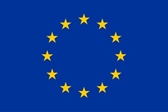Variability and change of cloudiness diurnal cycle over the past 30 years



The project "Variability and change of cloudiness diurnal cycle over the past 30 years: a global analysis based on polar orbiting satellites" is funded by the National Science Centre, Poland (NCN) via POLONEZ grant no 2015/19/P/ST10/03990. This project has received funding from the European Union’s Horizon 2020 research and innovation programme under the Marie Skłodowska-Curie grant agreement No 665778.
Project duration: 1.01.2017 – 31.12.2018
Team: Jędrzej S. Bojanowski (PI, Institute of Geodesy and Cartography), Jan P. Musiał (Institute of Geodesy and Cartography) and Krzysztof Markowicz (University of Warsaw)
Project objectives:
Clouds have a major impact on the Earth’s radiation budget and thus play a crucial role in the Earth’s climate system. Yet the most uncertain component of climate models is cloud feedback. It has been estimated to very likely range from -0.2 to 0.6 Wm-2 for 1°C of air temperature increase, thus its sign is still unclear (IPCC). Diurnal evolution of clouds, including their physical properties, has been studied, but its variability and change over the last decades have not been thoroughly investigated on a global scale. Therefore, as a part of the United Nations Framework Convention on Climate Change, the Global Climate Observing System (GCOS) has included cloud properties in the set of essential climate variables, with a special emphasis on satellite-based retrievals.
Cloud property datasets derived from passive sensors onboard a series of polar orbiting satellites (such as NOAA and MetOp) have a global coverage and now span a climatological time period (30 years). However, changes in a number of simultaneously operating satellites, drift of their orbits and varying equatorial crossing times of consecutive satellite missions lead to a different frequency of image acquisitions per day, and to their different local time. When observing the atmospheric state of a distinct diurnal cycle, such as cloud formation, the changing number and local time of measurements lead to uncertainty in cloud characteristics in the same order of magnitude as the GCOS requirements on decadal stability of cloud fraction data (3%).
The primary goal of this study is to fulfill these requirements, and thus render the satellite-derived dataset suitable for climate analysis. We aim to:
1) develop and validate a method for statistical reconstruction of cloud cover diurnal cycle,
2) create a 30-year global cloud fraction climatology (1°×1°) suitable for trend analysis by correcting the satellite orbital drift issue,
3) quantify global changes in cloud cover distribution and in diurnal cycle of cloud formation over the last 30 years.
Main results:
The first outcome of the project is the impact assessment of satellite orbital drift of NOAA and MetOp platforms on quality of cloud fractional cover (CFC) climate data records and on spurious trends observed therein. We revealed that the longest available (almost 4-decades-long) AVHRR-based climate data record called CM SAF cLouds, Albedo and Radiation dataset from AVHRR data (CLARA-A2) is not suitable for climate analysis, i.e. it does not comply with the temporal stability requirements defined by the Global Climate Observing System (GCOS), due to satellite orbital drift and varying sampling frequency. The details of this analysis are given in Subsection 2.1.
The unique achievement of the project is the unprecedent analysis of the climatological trends in the cloudiness diurnal cycle over the Meteosat disc, i.e. an area observed by the geostationary satellite positioned at approximately 0° N/S, 0° E/W. The trend analysis was preceded by the following subtasks: (1) an assessment of the overall performance of the CM SAF ClOud Fractional Cover dataset from METeosat First and Second Generation dataset (COMET) and (2) verification whether the COMET dataset provided in 30-minute resolution can accurately resolve the cloudiness diurnal cycle, and (3) development of the reference dataset composed of frequent (10-minute) ground-based cloud fractional cover estimates derived from the pyrgeometer measurements of incoming longwave radiation. The following subsections (2.2-2.4) describe each subtask, and the final results are given in Subsection 2.5.
2.1. Errors and spurious trends in the AVHRR-based cloud climate data records
Radiometers such as AVHRR mounted aboard a series of the NOAA and MetOp polar-orbiting satellites provide 4-decade-long global climate data records of cloud cover. Generation of such long datasets requires combining data from consecutive satellite platforms which featured a variety of technical limitations related to: degradation of satellite sensors, varying number of simultaneously operating satellites, radiometric and geometric distortions, as well as the satellite orbital drift. As a result of the drift, the cycle of diurnal cloudiness is sampled at different local times, which in turn leads to ambiguous trends revealed during climatological analyses. The aim of this subtask was to quantify the uncertainty and reveal spurious trends in the AVHRR-based cloud climate data records caused by the satellite orbital drift. The analysis was based on a high-temporal 30-minute reference time series of CFC derived from the COMET. We sampled the COMET time series at times of NOAA and MetOp satellites overpasses to simulate an artificial CFC time series that would be acquired by a series of the AVHRR sensors. Further, this sampled time series was aggregated to monthly means and compared with the entire COMET dataset. Our comparison reveals the spatial and temporal variability of theoretical errors and spurious trends in AVHRR-based CFC time series related to different diurnal cloud regimes. Figure 1 presents the theoretical mean bias in the AVHRR-based cloud climatology caused solely by the satellite orbital drift.
Figure 1: The mean bias error (MBE) in the AVHRR-derived cloud fractional cover (0-100%) caused by the satellite orbital drift: of morning NOAA satellites (left panel), afternoon NOAA satellites (middle panel) and a combination of the two (right panel). Credits: J.S.Bojanowski, IGiK
Figure 2: Spurious trends in the AVHRR-derived cloud fractional cover caused by the satellite orbital drift: of morning NOAA satellites (left panel), afternoon NOAA satellites (middle panel) and a combination of the two (right panel). Credits: J.S.Bojanowski, IGiK
For the climate analysis, the most important aspect is the temporal stability, which can be expressed as a trend in the mean bias over the analysed period. Figure 2 reveals trends in the mean bias of AVHRR CFC calculated against the entire COMET data. These trends indicate the spurious trends detected in the AVHRR-based cloud climatology caused by the satellite orbital drift. In other words, even applying a perfect cloud retrieval algorithm to AVHRR data would result in the cloud climatology showing false trends of a magnitude of 1% per decade. This magnitude reaches the threshold defined by GCOS required for studying trends in the CFC.
Ultimately, we provided an evidence (Figure 3) that when averaged over the whole analysed area, the AVHRR-based cloud climatology features temporal stability after 2002, since when at least 3 polar orbiting satellites featuring morning and afternoon orbits have been simultaneously operating. Having two satellite acquisitions per day from each satellite (i.e. from ascending and descending orbits) renders 6 observations a day that ensures a correct reconstruction of the cloudiness diurnal cycle.
Figure 3: Mean bias error (calculated against the COMET reference) of cloud fractional cover derived from AVHRR aboard NOAA and MetOp satellites caused by the orbital drift and verying observation frequency. Credits: J.S.Bojanowski, IGiK
2.2. Evaluation of the COMET cloud climatology
The evaluation of the COMET CFC products was performed using two reference datasets: visual cloud observations at 237 SYNOP stations and retrievals from the satellite LiDAR instrument (CALIOP). To put the COMET dataset performance into a broader context, we have compared it with other state-of-the-art datasets derived from geostationary and polar orbiting satellites (MODIS, CLARA-A2, CLAAS-2, PATMOS-x and Cloud_cci/AVHRR). Averaged over all reference SYNOP sites on the monthly time scale, COMET CFC expressed in percentage (of CFC) revealed the mean bias of -0.14%, the root mean square error of 7.04% and the trend in bias of -0.94% per decade. The COMET shortcomings include larger negative bias during the Northern Hemispheric winter, lower precision for high sun zenith angles and high sensor viewing angles. Yet, we concluded the COMET CFC corresponds well to the reference SYNOP measurements, and it can be used to analyse CFC trends and variability over the last two and a half decades.
2.3. Evaluation of cloudiness diurnal cycle derived from the COMET dataset
The task aimed at evaluation of the COMET dataset in terms of ability to reconstruct phase and amplitude of the CFC diurnal cycle. To this end, we validated COMET CFC diurnal cycle using observations from 111 SYNOP stations and compared it with other existing satellite-based datasets (CLAAS, ISCCP) and climate reanalysis (ERA-Interim and ERA-5). On average, the maximum CFC during the day for COMET occurs approx. 20 minutes later than for synoptic observations. COMET slightly underestimates CFC amplitude by 3%. The time series of bias for CFC, phase and amplitude are homogeneous for the period 1991-2015, but CFC and amplitude reveal statistically significant trends (below 1% per decade). We concluded that the COMET dataset is suitable for analysis of temporal changes in cloud diurnal cycle. In this context, the trends and variability calculated from the COMET in 1991-2015 (Section 2.5) ought to be reliable.
2.4. Generation of the reference high-temporal resolution ground-based cloud amount datasets
Evaluation of the satellite cloud amount climatology and related diurnal cycle of cloudiness requires frequent, long-term and accurate reference data. Such requirements are partially fulfilled by the visual synoptic observations of cloud fractional cover performed on permanent weather stations. Nevertheless, some inconsistencies in the synoptic data records exist that are related to: (1) subjective estimation of CFC by consecutive observers, (2) change of data acquisitions from manual to automatic (ceilometers), (3) bias in night-time observations, or (4) typographical error. To overcome these obstacles we have developed the 10-minute resolution cloud amount based on in-situ measurements of long-wave incoming radiation, air temperature and relative humidity. Our algorithm called the Bayesian Automatic Cloud Detection Algorithm (BACADA), builds on the Automatic Partial Cloud Amount Detection Algorithm (APCADA, Dürr and Philipona, JGR, 2004). Evaluation of BACADA cloud fraction (0–100%) was carried out based on a comparison with synoptic and total-sky imager cloud observations. The BACADA CFC estimates are of -1.53% (mean bias) and 17.86% (mean absolute bias). Our dataset based on Baseline Surface Radiation Network sites measurements is available under the URL: https://doi.pangaea.de/10.1594/PANGAEA.876005.
2.5. Trends and variability in cloudiness diurnal cycle
Significant climate signals in the cloudiness were revealed based on the Meteosat COMET data. Figure 4 presents the Theil-Sen monotonic trend calculated for 1991-2015 in the COMET CFC, its diurnal amplitude and phase. Statistical significance (p-val < 0.05) according to the Mann-Kendall test is shown by shaded areas.
Figure 4: Trends in the mean, amplitude and phase of Meteosat-based COMET cloud fractional cover in 1991-2015. Credits: J.S.Bojanowski, IGiK
The amplitude has been calculated as a difference between maximum and minimum CFC during a day. The phase indicates the local solar time of maximum CFC during a day. Evident spatial patterns of significant trends in the mean CFC can be observed, e.g. negative trend around the Black Sea and in the Southern Atlantic, as well as positive trends in the Northern and Central Atlantic and the Indian Ocean. Diurnal cycle amplitude tends to significantly decrease over the ocean within the whole Meteosat disc. Phase reveals only a few separate spots of positive trends only over the ocean, with climatologically important region within 0-20°S over the Atlantic. Clouds play a key role in the Earth’s radiation budget by reflecting shortwave radiation and reducing emissions of longwave radiation. Incoming shortwave radiation and emitted longwave radiation have a distinct diurnal fluctuation. Therefore, the detected shift in the diurnal cycle of cloudiness changes the radiation balance, that may lead to significant feedbacks in the climate system. Our findings built a background for studying these feedbacks.
To strengthen the ultimate project results of the trends in the cloudiness diurnal cycle, we compared for the overlapping period (2005-2012) the COMET variability and trends of cloudiness diurnal cycle with ones derived from other satellite-based data records: the CM SAF’s Cloud Property Dataset Using SEVIRI (CLAAS-2) and the International Satellite Cloud Climatology Project (ISCCP), as well as climate reanalysis ERA-Interim. The COMET and the CLAAS show similar trends in mean CFC. The ISCCP agrees in most areas, however trend values and statistical significance differ. The ERA-Interim reanalysis shows similar patterns than other datasets, but with stronger trends and larger areas of their significance. Trends in amplitude are spatially more heterogeneous. Still, the datasets agree at several regions of significant positive trend over the Atlantic, as well as at the Horn of Africa, where significant negative trend in amplitude was detected. Phase does not reveal significant trends according to all of the analysed datasets (in the overlapping period).
Publications supported by the grant:
- Bojanowski J.S., Musiał J.P., 2020, Dissecting effects of orbital drift of polar-orbiting satellites on accuracy and trends of climate data records of cloud fractional cover, Atmos. Meas. Tech., 13, 6771–6788. doi:10.5194/amt-13-6771-2020 PAPER
- Bojanowski J.S., Musiał J., 2018, Meteosat observations of diurnal variation of coud fractional cover, Proceedings of the EUMETSAT Meteorological Satellite Conference, 17-21 September 2018, Tallin, Estonia. PAPER
- Bojanowski J.S., Stöckli R., Duguay-Tetzlaff A., Finkensieper S., Hollmann R., 2018, Performance Assessment of the COMET Cloud Fractional Cover Climatology across Meteosat Generations, Remote Sensing 2018 10(5) 804. doi:10.3390/rs10050804 PAPER
-
Bojanowski J.S., Stöckli R., 2017, Correcting Cloud Fractional Cover Climatology by Geostatistical Merging of Satellite and Synoptic Data, Proceedings of the EUMETSAT Meteorological Satellite Conference, 2-6 October 2017, Rome, Italy. PAPER
- Musiał J., Bojanowski J., 2017, AVHRR LAC satellite cloud climatology over Central Europe derived by the Vectorized Earth Observation Retrieval (VEOR) method and PyLAC software, Geoinformation Issues, Vol. 9, No. 1(9), pp. 39-51. PAPER
- Bojanowski J.S., Stöckli, R., High temporal resolution cloud amount estimates at the Baseline Surface Radiation Network, under review in Journal of Geophysical Research
Conference and workshop appearances supported by the grant:
- 2nd Workshop of the CGMS International Clud Working Group (ICWG-2), Wisconsin-Madison, USA, 29 October - 2 November 2018.
- EUMETSAT Meteorological Satellite Conference, Tallin, Estonia, 17-21 September 2018.
- EUMETSAT Meteorological Satellite Conference, Rome, Italy, 2-6 October 2017.
- XXXVIII Ogólnopolski Zjazd Agrometeorologów i Klimatologów, 18-20 September 2017, Puławy, Poland.
- SPIE Remote Sensing Conference, Warsaw, Poland, 11-14 September 2017.
- Aerosol Research Network (Poland AOD) 3rd Conference on Atmospheric Aerosol Properties and Climate Impacts, Warsaw, Poland, 2-4 July 2017.




